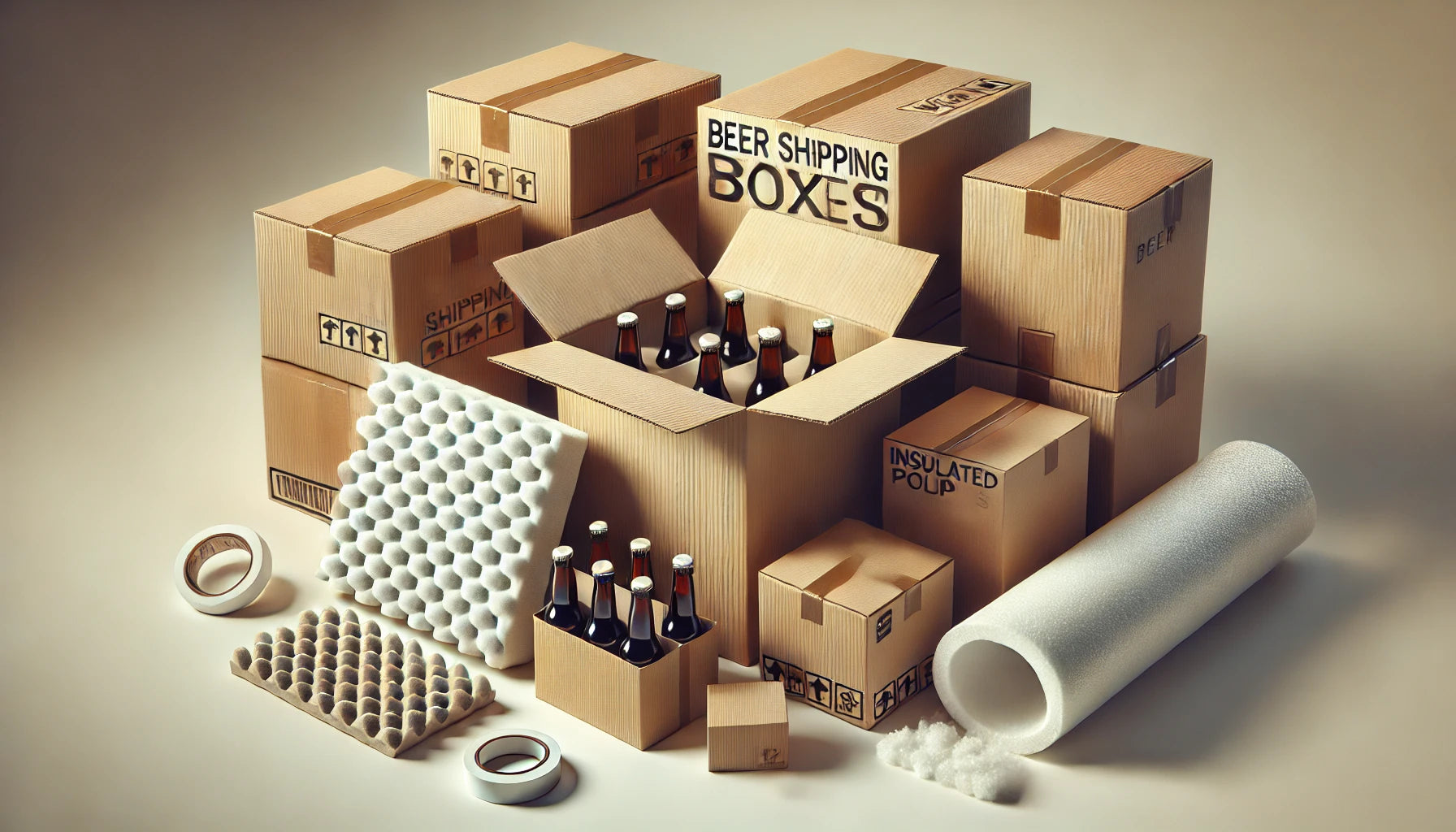
What are the best materials for beer shipping boxes?
Shipping beer requires quite a particular way of sending every bottle or can to its destination safely. If you're operating a craft brewery or seeking to send a box of beer to a buddy, choosing the right beer shipping boxes is very important. We will cover the best materials for beer shippers and offer some ways to give you tips on how to ship beer efficiently yet safely.
Can beer be shipped? Understanding the Basics
Before getting into the materials at hand, can beer be shipped? Yes, it can; however, there are certain regulations to follow and some best practices. If you want to ship beer legally, you will need to put the right labeling on it, package it accordingly, and finally adhere to state and federal laws. After you've made sure that you're compliant, the next step would be choosing the right beer shipper.
The Importance of Choosing the Right Beer Shipping Boxes
While shipping beer, the material used in beer shipping boxes matters a lot for the safety of your product. The right materials may prevent breakage, maintain freshness, and even reduce costs. Here are some of the best materials used in beer shippers:
1. Corrugated Cardboard
One of the most common materials used in beer shipping boxes is corrugated cardboard. It offers protection with multiple layers. It is lightweight and economically feasible. The corrugated layers are cushioned, which helps while shipping bottles or cans. Beer bottle boxes and beer can shipping boxes made using corrugated cardboard are custom tailored to safeguard your product from impacts coming from the outside during shipment.
Benefits:
- Lightweight and easily maneuverable.
- Cost-effective with small and large shippers.
- It offers excellent protection against breakage.
2. Molded Pulp Inserts
Many beer shippers include molded pulp inserts for added protection. These inserts are designed to firmly hold bottles or cans in place inside the beer box. They come in the form of trays, cup-shaped, commonly made from re-pulped paper, or otherwise referred to as sustainable materials. Thus, they help ensure an eco-friendly choice.
Benefits:
- Securely holds bottles or cans in place.
- Eco-friendly and recyclable.
- Provides additional cushioning and shock absorption.
3. Styrofoam Inserts
Not as eco-friendly as the molded pulp, Styrofoam inserts are the second most widely opted-for beer bottle packaging and beer can packaging. These inserts give better insulation and protection against temperature fluctuation, which makes them perfect for shipping beer in extreme temperatures. If keeping the beer at the right temperature is the most important thing to be considered, then Styrofoam inserts are a sure bet.
Benefits:
- Excellent insulation properties
- Provides superior protection against temperature fluctuations.
- Lightweight and easy to pack
4. Plastic Liners and Dividers
Plastic liners and dividers are used in brewery shipping containers to prevent breakage for large shipments. These materials help each bottle or can be separated from one another, decreasing the chance of breakage. Plastic is very hardy and can be used several times, thus making it economical for breweries that ship a lot of beer.
Benefits:
- Re-usable and durable
- Excellent separation and protection
- Suitable for large shipments
- Reinforced Tape and Seals
No matter what material you use for your beer box packaging, be sure to seal the box with reinforced tape and seals to ensure that the box remains closed during transit and provides extra peace of mind against leakage.
5. Reinforced Tape and Seals
Benefits:
- Prevents boxes from opening during transit
- Adds extra protection against leakage
- Low-cost, easy to apply
How to Ship Beer: Best Practices
Now that you know what goes into the making of a beer shipping box, here are a few tips on how to do it best:
- Choose the Right Size Box: Make sure that your beer box is properly sized for how many bottles or cans you're shipping. A snug fit reduces movement and breakage risk.
- Use Proper Padding: Whether you go with a Molded Pulp, Styrofoam, or any other material, see that each bottle or can gets proper padding.
- Label Clearly: Do not forget to label your shipping bottles with "Fragile" and "This Side Up" to make sure the people handling them handle them with care.
- Consider Shipping Costs: The cost of the beer box and the cost of shipping will vary depending on the materials used and the size of your box. Pick the one that offers protection at an affordable cost.
Conclusion
The right material for your beer shipping boxes can make all the difference in having your product arrive safe and sound. From craft beer to larger commercial shipments, the right beer shippers make a difference. Following those best practices below and using materials like corrugated cardboard, molded pulp inserts, and reinforced tape, you can be certain that your beer is safe while in transit to its destination.
This isn't just about protecting the beer; it's about delivering excellence to your customer. So the next time you're about to put together a beer shipping box, make sure that you have the right stuff to do things right.

